New Clinton Post Office of 1902
From: Clinton Daily Herald November 20, 1902
Transcribed by a Clinton County IaGenWeb volunteer.
A MODEL STRUCTURE.
THAT IS WHAT CLINTON’S NEW GOVERNMENT BUILDING IS.
Postmaster Gardner and His Corps of Workers Will Move into Their New Quarters
December 1 – Something of Interest Concerning the Handsome New Structure.
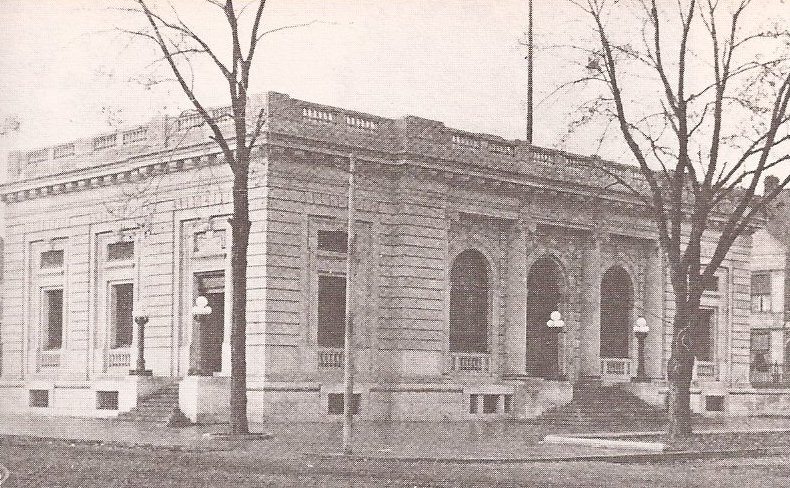 Clinton’s new government building is about completed. For eighteen months work
has been progressing on the handsome structure which grew into form and shape
under the skillful hands of the force of artisans employed, until today it
stands to all appearances complete, and about as handsome a specimen of Colonial
architecture as one would wish to see. Indeed Clinton people may well point with
pride to their post office at the corner of Fifth avenue and Third street, in
the very heart of the city proper and on one of her most aristocratic
thoroughfares.
Clinton’s new government building is about completed. For eighteen months work
has been progressing on the handsome structure which grew into form and shape
under the skillful hands of the force of artisans employed, until today it
stands to all appearances complete, and about as handsome a specimen of Colonial
architecture as one would wish to see. Indeed Clinton people may well point with
pride to their post office at the corner of Fifth avenue and Third street, in
the very heart of the city proper and on one of her most aristocratic
thoroughfares.
Is Handsomely Appointed.
The structure is built of Bedford stone upon a foundation of granite surrounded
by a wide pavement of stone, and inclosed with a handsome fence of Bedford rock
surmounted with an iron railing, the whole fashioned after a most elaborate
design, with pillars at the gateways. At the rear is a wide brick driveway and
in the yard are handsome courts. There are three entrances to the building,
proper, and one to the basement. Two of these open into the main lobby, and the
other into the mailing room. The front and side entrances consist of great
revolving doors built after an modern pattern, models of convenience and
adaptability, being so built as to serve the purposes of storm doors by a change
in the adjustment. The main or public lobby extends across the front of the
building, to the postmaster’s private room, partitioned off on its west end. The
floor of the lobby is Mosaic with a marble border; and the walls are of natural
white plaster, with green marble pilasters and wainscoting. In this room, as
throughout the entire building the woodwork is of oak, finished to represent
mahogany.
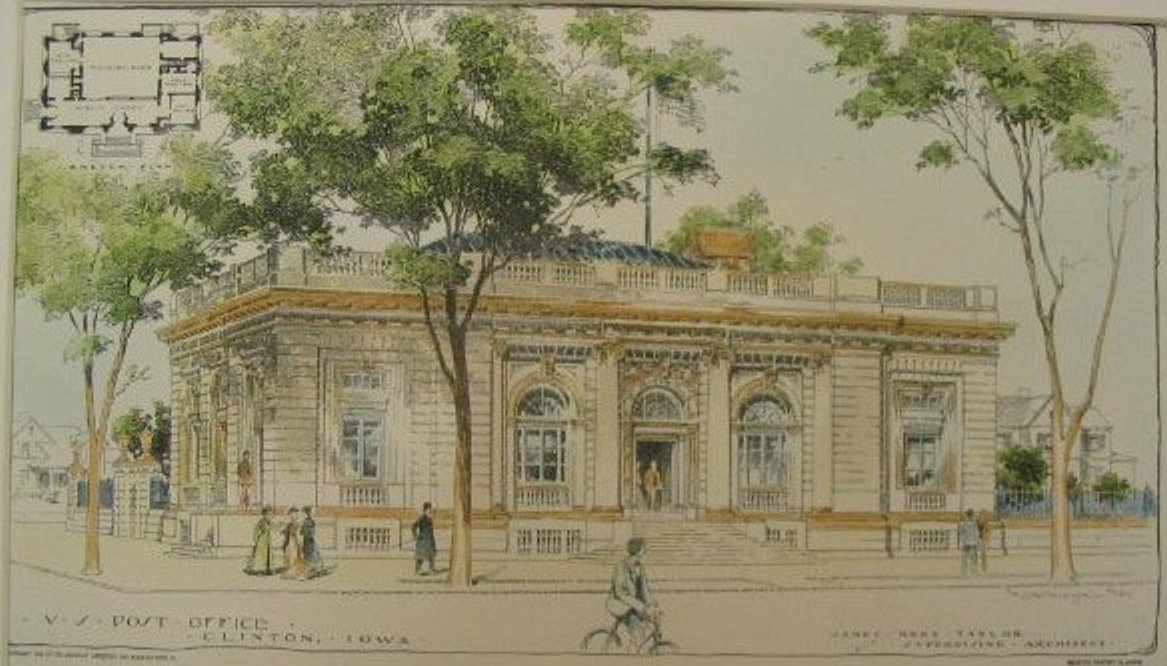
A Model of Convenience.
The window of the money order division opens into the lobby on the east. In this
room are two counters of oak and other necessary equipment of the same material.
Then come the registered letter window, the stamp window, the package and paper
drops, the letter drip, the general delivery window, the mail boxes, numbered up
to 597, and the carriers’ windows, ranged along the lobby in the order stated
from left to right as you enter from Fifth avenue. The arrangement is a model of
convenience, which fact the public will appreciate when the new office is ready
for business. In the lobby also, toward the left, is a door opening into a
spiral iron stairway leading to the roof.
The postmaster’s room, to the west of the lobby, is furnished with mahogany and
is appointed in the oak used throughout the building. Opening from it in the
rear is the assistant postmaster’s office, and back of this apartment is a
toilet room. A vault was placed opening into the room of the assistant
postmaster.
The Main Work Room.
The post office workroom is the main apartment of the building. Its dimensions
are 45x38x30 feet, a great airy well lighted room in which the Clinton post
office force will discharge its duties. It is furnished with natural
quarter-sawed oak, and within a few days will contain all the necessary
paraphernalia for the transaction of Uncle Sam’s business. Here, also, is a
vault of brick and steel, fire proof and burglar proof, and with the stamp
clerk’s apartment partitioned off on the east. A toilet room opens from the
workroom. The twenty-seven windows set high in the building on three sides of
the workroom, are opened and closed with patent window adjusters, three in
number, operated with cranks, a most ingenious device. The vaults in the
building, four in number, are of the S. H. Harris make, two containing safes,
and the others being designed simply for storage.
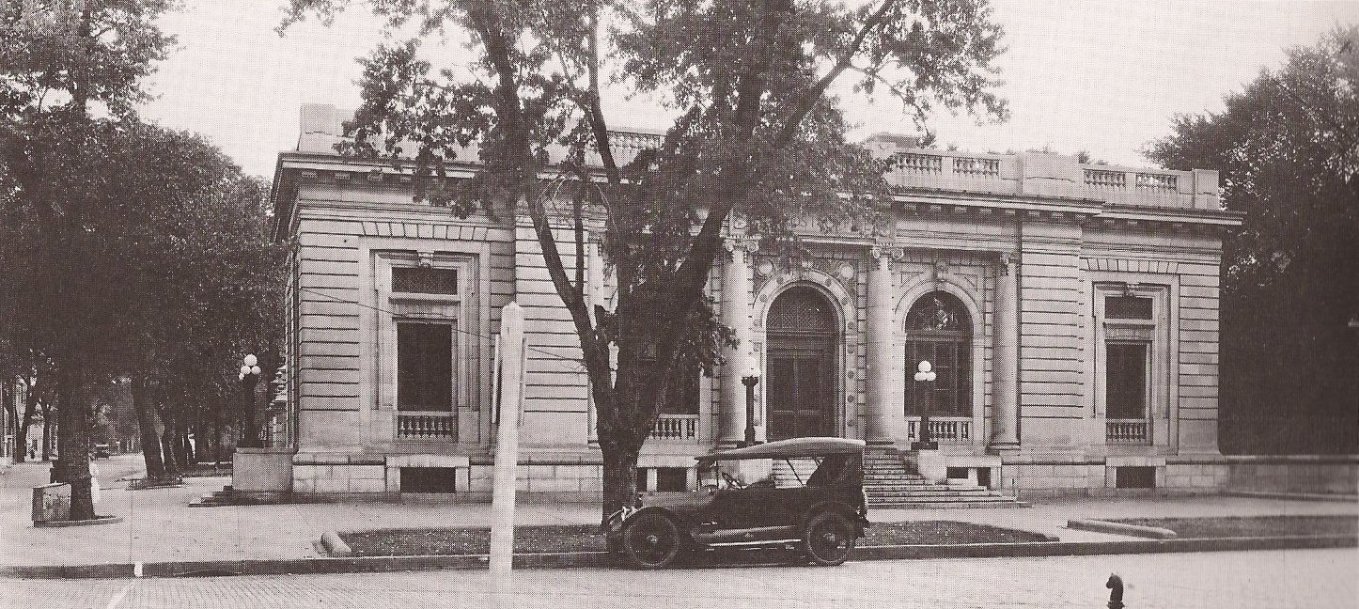
In the southwest corner of the building is the mail room, handsomely fitted up,
and equipped with the most modern furniture and devices necessary for this
particular branch of the work.
The Attic Apartments.
A stairway leading to the storage room in the attic opens from the mailing
apartment. The storage room is a commodious apartment. The “lookout” room also
is located in the attic, reached either from the store room or over a stairway
leading from the basement. Here a view of the entire workroom is obtained, the
aperture being so screened that the observer is not observed – the inspector
gaining access to the room secretly if he so desires, and watching the work
going on beneath.
At the rear of the mailing room is a glass marquaise awning over the mail room
platform.
In the Basement.
An iron stairway leads from the work room to the carriers’ apartment in the
basement. Here are chairs and tables for the convenience and comfort of the
force of carriers, also lockers for their clothes and toilet rooms close by. In
the basement is the steam heater, occupying a large apartment, fuel rooms, and a
bicycle room, fitted with a rack for wheels.
The principal apartments of the structure, summed up, are as follows:
Public lobby.
Money order room and lobby.
Workroom.
Postmaster’s room.
Assistant postmaster’s room.
Mailing room.
Two storage rooms.
Carriers’ room.
Toilet rooms.
Boiler room.
Fuel room.
Bicycle room.
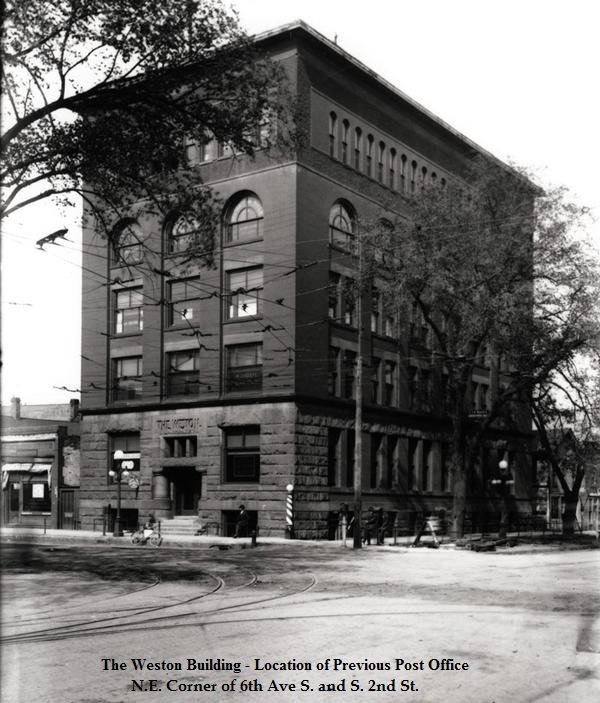 Will be Occupied December 1.
Will be Occupied December 1.
The building is heated throughout with steam, and is lighted with electricity
and gas. M. Yeager & Sons of Danville, Ill., were in charge of the construction
of the building, upon which the sum of $100,000 has been expended.
The painters and decorators have almost completed their work, and within a few
days the building will be complete and the furniture put in place. After the
close of the day’s business on November 29th Postmaster Gardner and his force
will commence the work of transfer from the old quarters in the Weston building,
and on the first day of December the new post office will be opened.
The Clinton Daily Herald: August 1, 1902
THE NEW POSTOFFICE.
THE CLINTON GOVERNMENT BUILDING IS NEARING COMPLETION.
Building Will be Ready for Occupancy by October 1 – Will be Handsomely Equipped
and a Credit to the City – Something of Its Internal Arrangement.
Work on the new Clinton government building on Fifth avenue is now nearing
completion. A few days ago the fence that has been surrounding the building was
torn down and one is able to get an unobstructed view of the structure. A wall
has been constructed on a line with the north side of the building to the
western limit of the lot. It is about four feet high. A similar wall extends to
the alley on the east side. The lot in front of the building on the east and
north sides has been leveled and crushed rock is being placed on it. On this,
crushed granite cement will be placed. This will form a very durable walk and
will extend from the building to the street.
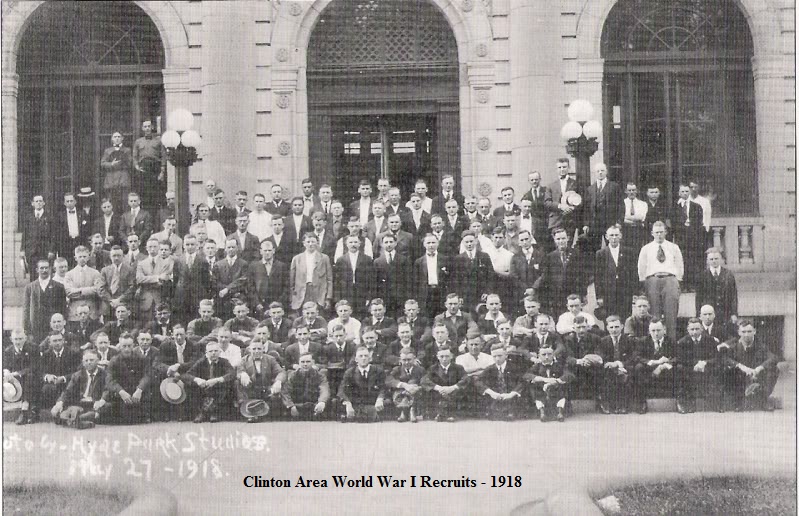
The main entrance will open on Fifth avenue. Another entrance will open from
Third street, while there will be a door in the rear of the building for the use
of employees. At the sides of each entrance bronze lampposts have been placed
through which gas pipes have been run.
The main corridor running along nearly the entire front of the building, will be
the most finely decorated part of the structure. Marble wainscoting will extend
from the floor to the ceiling and some of it is already in place. This will be
put up as soon as possible. The marble is polished before being hung in place,
and is supported by large hooks. The base will be darker than the other. The
walls will be very beautiful when finished. The ceiling of the lobby is now
nearly completed. It is entirely covered with plaster casts. These are made in
the building by an expert moulder. The process as followed in this building is
interesting. First a model of clay is made very carefully. After this is dry
gelatin is poured into this mould and allowed to cool and harden. When this has
hardened the gelatin mold is peeled off and the cast is ready to place in
position. A large number of molds are being used in the decorating of the
building, various styles of rosettes being among the decorations. This work is
very particular, as the variation of a sixteenth of an inch in a panel twelve
feet long would be detected. Everything is measured with a steel rule and must
exactly coincide with the plan. In the work room no such elaborate decorating
will be done and the finishings will be plain. The ceilings will be practically
plain with few decorations, while wood will replace the marble in the
wainscoting. The chief decorator has informed a Herald reporter this morning
that his work will be finished in two weeks, after which all the gelatin casts
will be re-cooked and made into different shaped molds for other buildings. They
are saved though until the casts have been accepted at the inspection. The chief
decorator remarked this morning that although he had had charge of the
decorating of a large number of buildings, including several court houses, the
State University building at Iowa City and four other postoffice buildings, this
work at Clinton is the finest of them all. It is more exact and the patterns are
much more difficult.
The safes are now being put in place. One will be placed in each office. A large
one will be placed in the southeast corner of the building in the money order
room. This room will be divided into two rooms, one for the public and one for
the use of the employes, where the work of the department will be carried on.
The public room will be nicely finished, much better than the work room. In the
center of the building the main office will be located. The general delivery
window will be near the east end of the room and will open into the lobby.
The boxes will be to the west of the window. There will be a large number in use
and they will be more up to date then the ones now in use in the post office.
For everything in the new building will be of the latest pattern and will be the
most convenient that is in use. The postmasters’ office will be in the northwest
corner of the building.
Small rooms are being built between the walls of the structure which will be
used by the inspectors in case they wish to watch an employe under suspicion. A
dark passage leads from the basement between the walls to the room, which
overlook the entire postoffice. Here an inspector can sit and look through small
holes in a radiator down into the workroom and observe the actions of any
suspected employe unobserved. Three such rooms will be built in the new post
office.
Before the building will be opened after it is finished a general inspector will
be sent by the government to see if the building is constructed according to the
plans and specifications. The inspection will be a severe one. It is not
expected the new structure will be ready to open for business before the first
of October.
The Clinton Daily Herald: January 9, 1902
THE NEW BUILDING.
Plan of the Interior of the Clinton Postoffice.
Handsome New Government Building Will be Ready for Occupancy on July 1 – A
Description of the Interior Arrangement – The First Force of Occupants.
The Herald today presents a cut of the new government building, now in course of
construction on the lots at the corner of Fifth avenue and Third street. From it
a better idea of what the structure will be may be gleaned than from an
inspection of the as yet only partially completed building. The new government
building, constructed of New Hampshire granite and New Bedford stone, at a total
cost of $100,000, will be an ornament to the city. The style of architecture is
colonial, a broad central stairway leading from the sidewalk on Fifth avenue to
the lobby or front hall. It is but one story high, and will contain nothing but
the post office.
A plan of the interior of the building is shown in the upper left hand corner of
the cut. It will be seen that the large central apartment is the postmaster’s
work room, with the public lobby extending across the front of the building,
east and west. Here the boxes will be arranged, on each side of the entrance.
There will be an increase in the number of boxes over the present number, and
four sizes will be put in, instead of three which the Clinton postoffice now
contains. At the east end of the public lobby is an entrance, leading from Third
street, and at the west end of the lobby will be the postmaster’s office. The
stamp window opens from the work room, just to the left of the main entrance. On
the east side of the building, opening from the lobby, are two apartments, the
rear of which is the money order room. The assistants’ room is located back of
the postmaster’s office, on the west side. The arrangement of the interior is
most convenient, and the new post office in Clinton will be a model one.
The building will be 45 feet in height, from the ground to the top of the
balustrade. It is 98 feet in length, and 60 feet wide.
A force of twenty men is at work on the building, which has been completed to
the balustrades. It is expected that the postoffice will be ready for occupancy
by July 1.
Following is a list of the officials and assistants who will be the first
occupants of the new building:
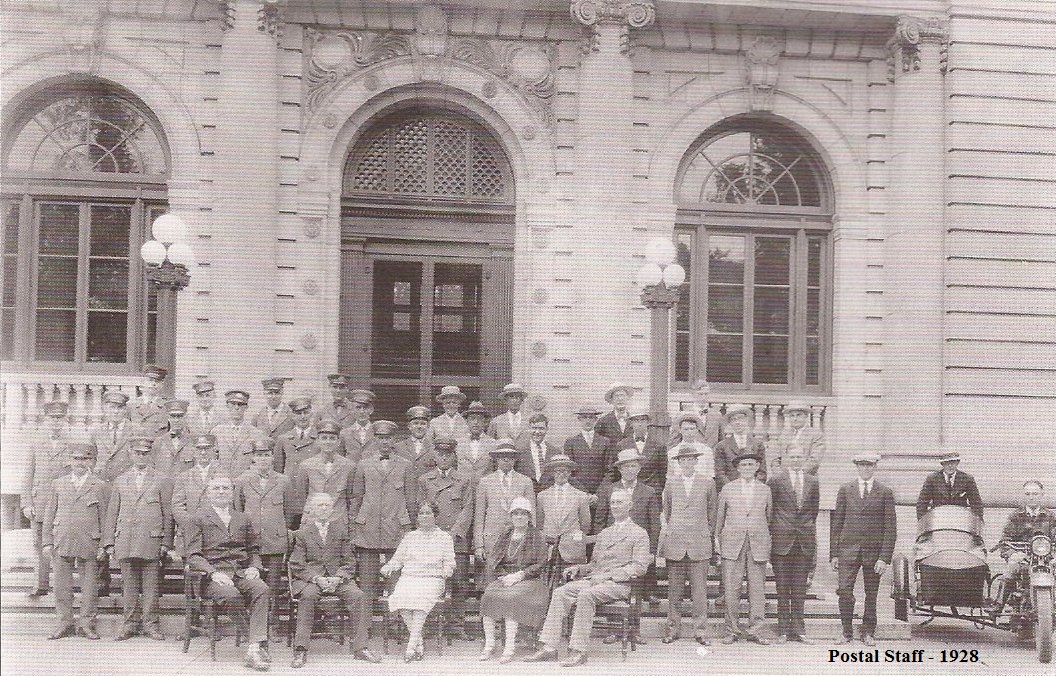
Postmaster W. S. Gardner.
Assistant Postmaster L. H. Roberts.
Registry and Money Order Clerk Miss Grace Goodwin.
Day Mailing Clerk Charles R. Little.
Night Mailing Clerk J. W. O’Neil.
General Delivery Clerk E. D. Lundgren.
Clerk George E. Harbron.
Letter Carriers.
District No. 1. – E. F. Frink.
District No. 2. – C. S. Petersen.
District No. 3. – G. N. Dickersen.
District No. 4. – J. A. Keefe.
District No. 5. – William Devine.
District No. 6. – M. E. Nelsen.
District No. 7. – W. E. Hall.
District No. 8. – F. A. Burdick.
District No. 9. – A. D. Burdick.
District No. 10. – James Kilgallon.
District No. 11. – Jorgen Skow.
Substitute carrier – George Rehwoldt.
Substitute carrier – C. E. Wilson.
The Clinton Daily Herald: March 1, 1899
GET A PUBLIC BUILDING.
Congress Appropriates $100,000 for a Building in the City of Clinton.
GOOD WORK BY CONGRESSMAN CURTIS.
Success Comes When Least Expected – A Splendid Recognition of our City.
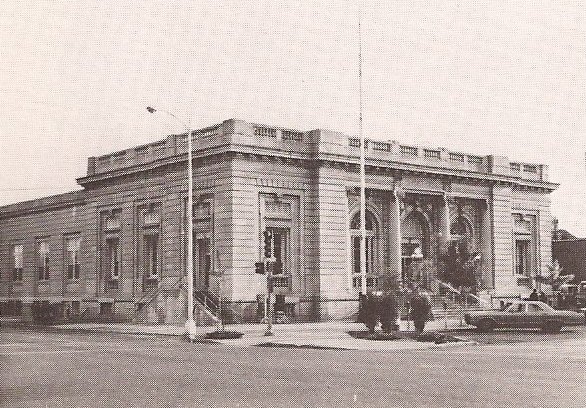 The people of Clinton Tuesday night were treated to a most agreeable surprise.
They have so often had their hopes raised by the prospect of an appropriation
for a public building, and as often chilled by defeat, they had hardly dared to
hope that the bill before congress appropriating $100,000 for the city, would
pass. The failure to reach the bill when the house was considering such
measures, a week or ten days ago, had led to the conclusion that the bill would
not be reached this session. In fact letters from Washington stated that the
bill would not be reached. But it seems that by good fortune the speaker was
induced to give another part of a day to public building bills, and along with
many others, the Clinton bill passed the house and later in the evening was
called up in the senate and adopted. Executive approval will follow of course,
and the public building is assured.
The people of Clinton Tuesday night were treated to a most agreeable surprise.
They have so often had their hopes raised by the prospect of an appropriation
for a public building, and as often chilled by defeat, they had hardly dared to
hope that the bill before congress appropriating $100,000 for the city, would
pass. The failure to reach the bill when the house was considering such
measures, a week or ten days ago, had led to the conclusion that the bill would
not be reached this session. In fact letters from Washington stated that the
bill would not be reached. But it seems that by good fortune the speaker was
induced to give another part of a day to public building bills, and along with
many others, the Clinton bill passed the house and later in the evening was
called up in the senate and adopted. Executive approval will follow of course,
and the public building is assured.
The means a great deal for Clinton. Most of the work will be done by Clinton
workmen. A Clinton man may get the contract. Some of the material will be
supplied here. But the moral effect will be good. The government builds well. It
makes little of display, yet even a building costing $100,000, will be no mean
structure. When the government plans a building it does so upon the theory that
the government will last for a thousand years at least. The foundations and
walls of all post office buildings are massive. Usually heavy lime stone is used
for the foundation and the walls are of red pressed brick. At least that is the
style of most of the public buildings in the west.
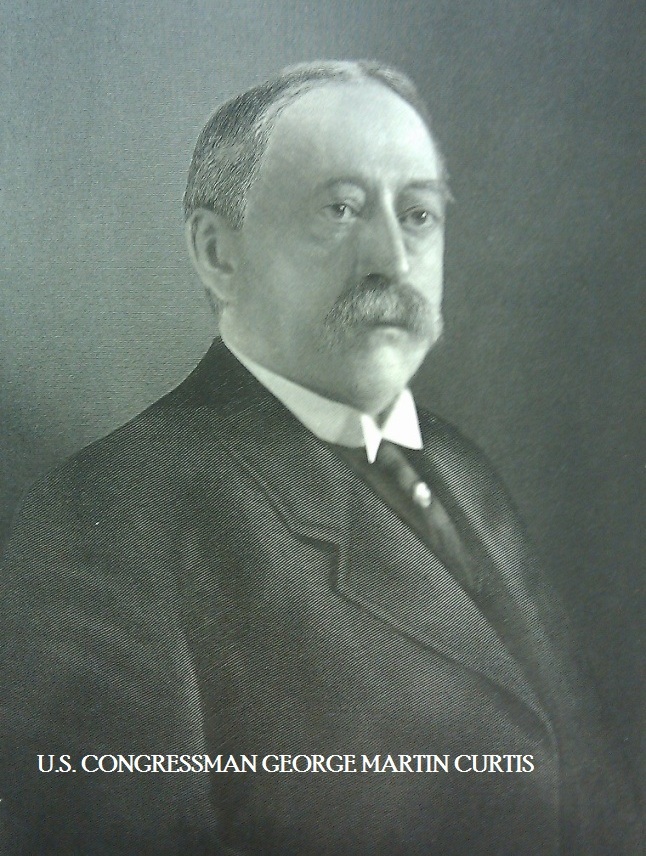
Naturally the first question that comes is where will it be located. Nobody can
tell. The government will permit of no land speculations. In some cases
representatives of the treasury department make the selection of a site, while
in other places local commissions are appointed to receive propositions and make
recommendations.
The government has much red tape in preparing for the beginning of operations.
First there must be the selection of a site. The question of a title is
carefully examined by experts; then plans are adopted and specifications drawn;
bids are called for, which in the case of buildings costing $100,000 include
everything to complete the building except heating, lighting and furnishing.
The appropriation is a fitting recognition of the importance of Clinton as
business point. It ought to stimulate the city to better things in a business
way. It undoubtedly will attract attention to the city and assist in bringing in
additional capital and new enterprises. The past year has been an excellent one
for Clinton, but this one ought to be a better one and the next still better. It
will not do to stand still and look to the government to achieve something for
the city. The government has given us the recognition so well deserved, but the
destiny of the city is in the hands of our own people. The present is certainly
a most fitting time to make renewed efforts for the general prosperity of the
community.
The appropriation is the supreme act of Congressman Curtis in behalf of the
city, coming just as he is about to turn over the responsibilities of
congressional life to his successor. The passage of the bill is an additional
proof of his industry and of his influential standing in the house. He has the
congratulations of all the people of Clinton.

